-
 jason lawson
0I'm not getting close enough to the cord when sewing. It kind-of sits on top like a tear drop. I'm using a 1/4 inch welt foot and I've even tried cutting an 1/8 off of the allowance to try and let it sit deeper between the insert and the top plate. I am sewing all the materials at once so not to see any thread. This is my very first attempt at a bench seat so go easy on me! (inserts are way too big) I'll go back and make the pattern from the foam versus the old fabric.
jason lawson
0I'm not getting close enough to the cord when sewing. It kind-of sits on top like a tear drop. I'm using a 1/4 inch welt foot and I've even tried cutting an 1/8 off of the allowance to try and let it sit deeper between the insert and the top plate. I am sewing all the materials at once so not to see any thread. This is my very first attempt at a bench seat so go easy on me! (inserts are way too big) I'll go back and make the pattern from the foam versus the old fabric.
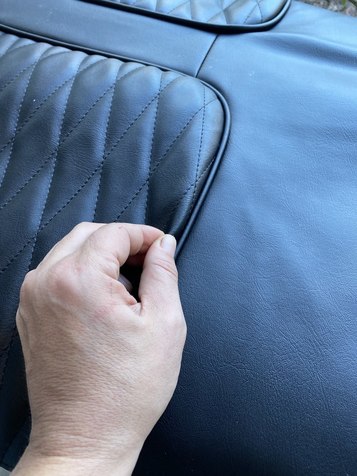
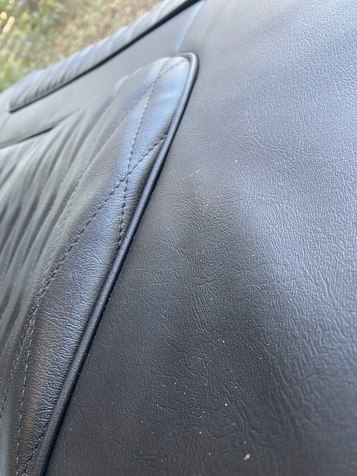
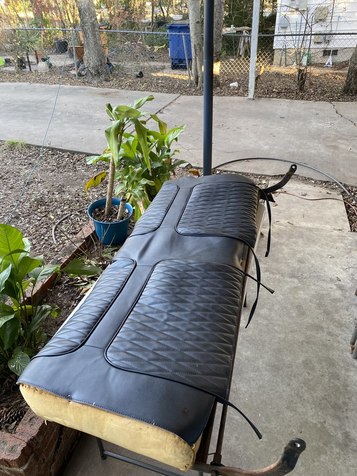
Thanks for the add btw! -
 pavel staroverov
3Looks good. I am thinking stiching the welt closer if possible and taking the pattern from the foam next time. Try adding a 1/2 scrim gluing it to the foam. That should pump it up We are always learning from our mistakes all the time. Good job and looks good.
pavel staroverov
3Looks good. I am thinking stiching the welt closer if possible and taking the pattern from the foam next time. Try adding a 1/2 scrim gluing it to the foam. That should pump it up We are always learning from our mistakes all the time. Good job and looks good. -
 Keith Mayne
38I cut my material 1 1/4 inch wide which with 1/8(I think) inch cord gives me 10mm seam allowance.I first sew the piping (no presewing) to one panel at 8mm seam allowance then when I sew the next panel on I sew at 10mm allowance.Both 8mm and 10mm allowance are scribed onto my sewing machine base.I think my piping foot is 3/16.
Keith Mayne
38I cut my material 1 1/4 inch wide which with 1/8(I think) inch cord gives me 10mm seam allowance.I first sew the piping (no presewing) to one panel at 8mm seam allowance then when I sew the next panel on I sew at 10mm allowance.Both 8mm and 10mm allowance are scribed onto my sewing machine base.I think my piping foot is 3/16. -
 jason lawson
0Ok thank you! I do feel like the foot might be too big. Would a right zipper foot work as well?
jason lawson
0Ok thank you! I do feel like the foot might be too big. Would a right zipper foot work as well? -
 Keith Mayne
38For the price of a piping foot set I'd just get a new one.I don't use zipper feet but have just cut down old piping feet but the piping foot does have the cut out on both the inner and outer foot.I tend to buy feet for all sort of useages, many I've yet to use.One I bought recently that is useful is a piping foot that has the needle on the opposite side from normal, it works great for seing pipping cord on the lower skirt of a seat cover so it reinforces it for hog ringing onto the seat frame.
Keith Mayne
38For the price of a piping foot set I'd just get a new one.I don't use zipper feet but have just cut down old piping feet but the piping foot does have the cut out on both the inner and outer foot.I tend to buy feet for all sort of useages, many I've yet to use.One I bought recently that is useful is a piping foot that has the needle on the opposite side from normal, it works great for seing pipping cord on the lower skirt of a seat cover so it reinforces it for hog ringing onto the seat frame. -
 Keith Mayne
38https://www.khsew.com/index.php?route=product/product&path=180_259&product_id=454
Keith Mayne
38https://www.khsew.com/index.php?route=product/product&path=180_259&product_id=454
Lots of other feet at reasonable prices, just found a binder that I think may work with leather and carpet.
The machine I've got is a bit of an odd one, never seen another in this configeration with a singer style foot but it meets all my needs.Typical tw1-899, same machine as a brother and a seiko.
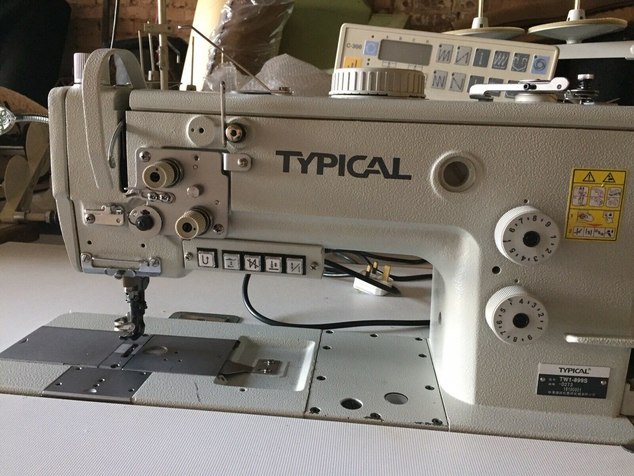
-
 Warren McClung
9I bought a set of piping feet off ebay that were made in China and they never debured the needle hole. Its harded steel now so it take a diamond tip dremal to debur it then you have to follow up with 600 to smooth that out so if you can find them made from somewhere else. Pay the extra money.
Warren McClung
9I bought a set of piping feet off ebay that were made in China and they never debured the needle hole. Its harded steel now so it take a diamond tip dremal to debur it then you have to follow up with 600 to smooth that out so if you can find them made from somewhere else. Pay the extra money. -
Nick Lupien
7Sounds silly but flip the material over and stitch it again to get the seam tighter. Also if you can twist the walking section of the foot on your machine you can get the welting closer to the needle. Sometimes running a smaller welting foot will work but be careful you do not stitch over the welting. -
 Gareth Judd
12This.... I have piping feet from 4-8mm, even if you use a foot that's 1mm smaller than it should be it won't pull it up any tighter then the correct foot.
Gareth Judd
12This.... I have piping feet from 4-8mm, even if you use a foot that's 1mm smaller than it should be it won't pull it up any tighter then the correct foot.
due to the way the work goes through the machine with the material being flat and the walking foot over the top it will never be 100% tight but if you flip the work and sew again your get 1-2mm out of it and it will be as tight as possible -
 Keith Mayne
38I did notice today when using a piping foot that was too small the material didn't feed properly and the stitch length was reduced.
Keith Mayne
38I did notice today when using a piping foot that was too small the material didn't feed properly and the stitch length was reduced. -
 David Coco
1Nick has the answer. I was taught by a Master Trimmer during my apprenticeship, sew it once to position, sew it the opposite side/direction to tighten. It takes a little care but it works. David Coco Winchester Va.
David Coco
1Nick has the answer. I was taught by a Master Trimmer during my apprenticeship, sew it once to position, sew it the opposite side/direction to tighten. It takes a little care but it works. David Coco Winchester Va. -
 Todd Aho
3Hi Jason,
Todd Aho
3Hi Jason,
First of all, nice job on the design. After more than 50 years of experience I've found that no matter what combination of a foot on your machine you can feel when you're close. Sewing 2, 3, 4 times to get closer will work but it is simply a waste of time. Don't buy new equipment, practice, practice, practice! Mastering a sewing machine is no different than a musical instrument!
Also, A very clean tight look can be achieved using 1/2 scrim on the faces, ( between the inserts), and 1/4 on the rest. Keep up the great work, hope this helps!
Welcome to The Hog Ring!
This forum is only for auto upholstery pros, apprentices and students. Join today to start chatting.
More Discussions
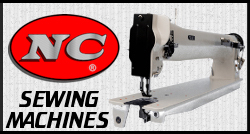







- Terms of Service
- Useful Hints and Tips
- Sign In
- Created with PlushForums
- © 2025 The Hog Ring












